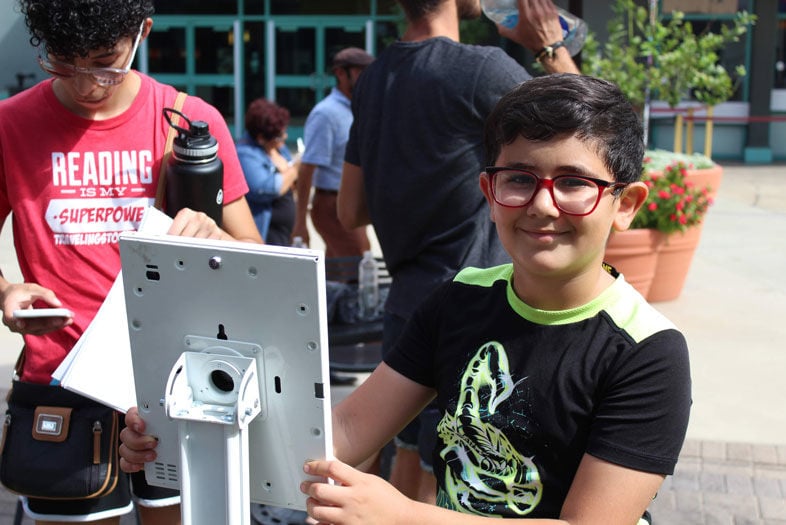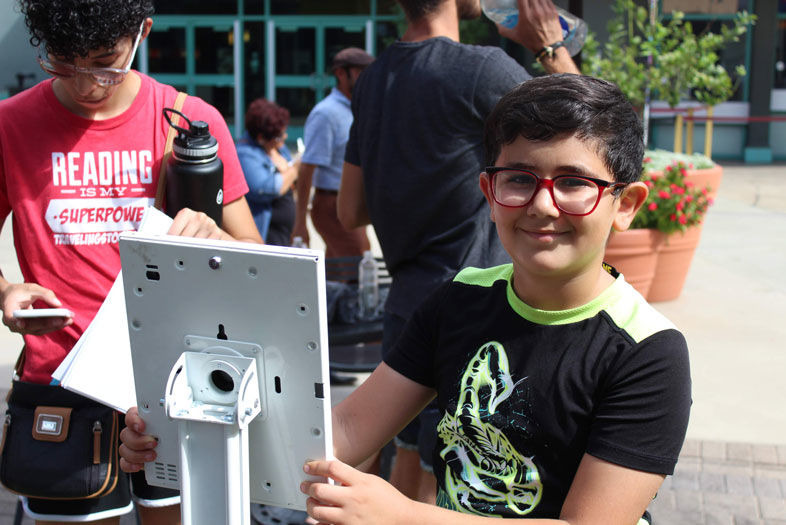The mission of Emily Moberly’s nonprofit, Traveling Stories, is to “empower kids to outsmart poverty.” For her, the way to tackle that bold goal is both audacious and simple: get kids to fall in love with reading, using mobile StoryTents to provide one-on-one reading support and offer prizes to motivate kids to keep coming back.
But telling Traveling Stories’ own story is easier said than done. In today’s world, nonprofits can no longer rely on a noble mission alone for funding and support. “There’s always pressure to collect data and cite data in my strategic planning or fundraising asks,” Moberly says.
Josh Shapiro, executive director of UC San Diego’s Center for Research on the Regional Economy, agrees. He works closely with nonprofits around the county, and says that in an increasingly data-driven world, nonprofits need numbers to prove that their good intentions are actually having an impact. “This transformation is the accountability era we live in. Funders from foundations to private philanthropists want to maximize their impact and, in doing so, have pushed nonprofits to do a better job at demonstrating that what they are doing works.”
Moberly reports that in her eight years in the nonprofit world, data has always been important. Being able to collect and analyze that data in meaningful ways has been a constant challenge. “Traveling Stories has always sought to have data back up our program design and our program stories, but we are a small team, and sometimes it literally does cost as much to measure a program as it does to offer it.”
While she runs a grassroots organization, her experience is far from unique. Christopher Yanov is the president and CEO of Reality Changers, a nonprofit that prepares youth from disadvantaged backgrounds to get into and succeed in college, and he deals with the same conundrum. “There is nothing more important than gathering data to prove what works and what doesn’t,” he says, “but gathering all that data is so expensive. It can literally cost the same amount as hiring a full-time staff person.”
The cost of data is a real issue for notoriously cash-strapped nonprofits, says Jared Aaker, cofounder and CEO of Tablecloth. His company’s platform aims to demystify and democratize the collection of data in the nonprofit world, allowing them to quickly and easily share that data with funders, board members, and the community. Moberly says working with Tablecloth has enabled Traveling Stories to “amp up” its data collection by moving it from analog to digital and using tablets to collect a whole host of data, including the number of kids they reach, how often each child visits the program, and changes not only in their attitudes about reading but also in their reading levels. “This is vital data that we can use in reports to our donors, grant applications, even conversations with the parents of children we serve,” she says. “It helps set us apart and allows us to communicate the impact of our program more effectively to more people.”
And showing impact is the key, says Elenore Garton, cofounder and chief impact officer at Tablecloth. “Three or four years ago, it was just capturing output in data—information like how many people you served. Now it’s about demonstrating impact, how you’re affecting change. A lot of nonprofits haven’t evolved in terms of this, but funders have.”
Nancy Jamison, president and CEO of San Diego Grantmakers, which works to grow local philanthropy, says there are almost 11,000 nonprofits in San Diego, so funders have their pick of which ones to support. “If a funder has a choice between two nonprofits, it is that funder’s responsibility to fund the one that will impact more lives,” she explains. “It would be irresponsible not to look at who has the data to prove that impact.”
“Too often, nonprofits talk about how many people they’ve served, and not about how they’ve helped the people they’ve served,” adds Jose Cruz, executive director of the Barrio Logan College Institute, which works with students in the community to prepare them for college. “The sophisticated funders, the ones with the big dollars, are looking for outcomes, not just output.”
To help nonprofits get the skills they need to better tell their story, Shapiro has developed a specialized certificate at UC San Diego Extension. Aimed at nonprofit staff with little to no data training, the Community Research and Program Evaluation Certificate focuses on research methodologies, developing survey questions, accessing community data, and performing analysis.
Still, while having those technical skills are important, nonprofits ultimately can’t rely on numbers alone, Aaker says. They need to be able to connect with a funder’s heart, not just their head. It’s an approach he likes to call “D ’n’ A,” or data and anecdotes, and it’s central to Tablecloth’s technology, which makes it easier for nonprofits to share the stories of their work through video, pictures, and blogs—News Feed–like stories, backed up by lots of data-driven charts and graphs. “The best nonprofits have perfected D ’n’ A,” Shapiro says. “We have to remember that, while numbers are important, the heart of any nonprofit is the mission and the people they serve.”

How Nonprofits Are Crunched For Data
PARTNER CONTENT
Nonprofit Traveling Stories offers reading support to kids, as well as prizes to motivate them to come back and learn to fall in love with reading
















